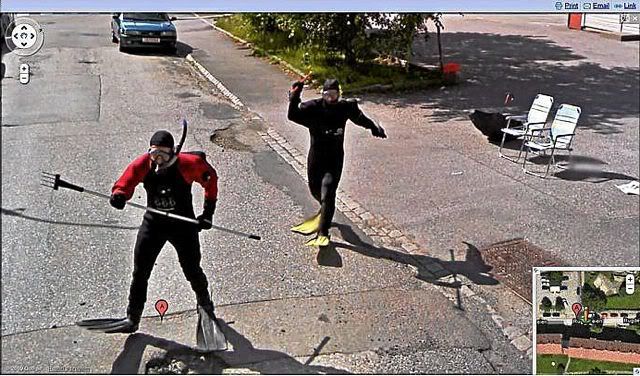Tigerman
Contributor
I never claimed norwegians to be sane..how about chasing the google car in scuba gear and with pitchforks? lol


Thats actually a fishing tool btw
Shine a light into the river and fork that fishie.
Welcome to ScubaBoard, the world's largest scuba diving community. Registration is not required to read the forums, but we encourage you to join. Joining has its benefits and enables you to participate in the discussions.
Benefits of registering include
I never claimed norwegians to be sane..how about chasing the google car in scuba gear and with pitchforks? lol


I never claimed norwegians to be sane..
Thats actually a fishing tool btw
Shine a light into the river and fork that fishie.
Andy, SeaCobra, SuperG, et al: a (semi)serious question. Do any of you have a problem with people practicing air sharing during a dive? Not doing an ascent, but just practicing the act of sharing air? I'm not asking about the purpose or intent -- merely the act itself. As an instructor, I do advise ALL of my students to practice the ACT of sharing air during a dive and remind them that "you use it or lose it" applies.
IF the ACT of an air share is OK during a dive, what difference does it make as to the actor's intentions?
Andy -- would I teach my tech students to immediately begin their ascent if they had a non-working reg? Well, it depends -- is it non-working because they forgot to turn on the valve?
(And don't ask me how I know that!)
Andy, I see the value in not doing this with a student or a new diver - and have said so. How does your argument hold up when both divers are indeed skilled and proficient at air-sharing?
... That principle being: that divers should enter the water with sufficient personal gas to carry out their planned dive.
..I've been known to (after asking) grab my wife's octo and suck down a little of her gas to extend our mutual bottom time...
The HORROR! How can you?!?!
My girlfriend says that the only reason I bring her along on dive strips is for the extra air. (Her SAC=0.3 is half of my SAC=0.6)
I don't wait until I'm down to 700 psi, I will wander over to her when I get down to about 1,200 psi.
The dive master usually gets really interested in us when he sees that I'm on her octo.
The only time we do this is on drift dives in Cozumel where you can stay down for as long as you have gas on your back - and, like Teamcasa says, I can' my hands on doubles.
I haven't tried to portray this as any sort of "you're gonna die" issue... at least, not with "skilled and proficient" divers.
I simply feel (my opinion) that there is a better long-term method to deal with the problem of inconsistent air-consumption within a pair/team.... a method that retains the principle of self-sufficiency in conjunction with effective gas planning/management. That principle being: that divers should enter the water with sufficient personal gas to carry out their planned dive.

